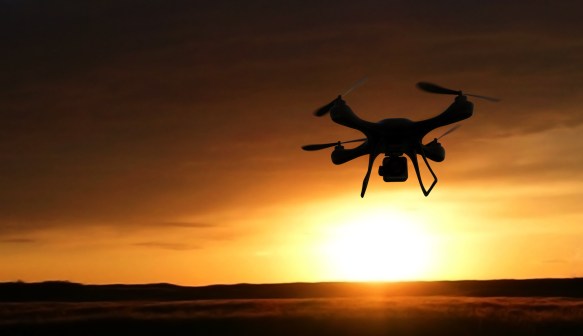DOD needs to invest more in its IT to integrate autonomous tech — report


Photo: DOD
Autonomy and artificial intelligence may be integral to the Defense Department’s Third Offset Strategy, but making those technologies useful will require IT investments to integrate them into defense systems, a new report says.
“Both the DOD and the Intelligence Community, they are investing in these technologies. So artificial intelligence is a big priority area, machine learning, all these technologies,” Matthew Hummer, director of analytics at big-data and analytics firm Govini, told FedScoop. “But they haven’t really done a good job of integrating it into the current Distributed Common Ground Systems. And that’s because those systems really need pretty much a big overhaul to be able to do that.”
A new report from Govini says that while the Processing, Exploitation and Dissemination architecture for Intelligence, Surveillance and Reconnaissance (ISR) efforts is “critical” to autonomy’s future, the largest segment of government spending in autonomous capabilities has gone toward Unmanned Aerial Surveillance (UAS).
UAS efforts accounted for nearly 57 percent of the of the $59.3 billion autonomous capabilities market from fiscal 2011 to fiscal 2016, the report says.
“UAS’ prominence is a direct result of quick reaction capability development and purchasing regimes during the early years of the War on Terror,” the report says. “One drawback from the rapid development is that platforms were designed for precise missions mostly in uncontested environments and therefore tend to operate in isolation from other assets, including both manned and unmanned.”
The report continues: “Details of integration into broader flight control and ISR PED networks were overlooked at the time. As a result, more platforms of various types were developed and deployed causing fragmented concepts of operations and limiting the ability to share valuable information.”
Hummer noted that right now much of the data coming from the various unmanned platforms is managed manually — so the next-generation system needs to automate data flows to enable officials to use the data to make decisions in real time.
But this problem isn’t a blind spot for the DOD, Hummer and the report both made clear.
“Both the Army and the Air Force are trying to figure out how to transition to that type of model, and of course, in order to have that type of model you need to invest in cloud infrastructure, you need to invest in machine learning technologies, you need to invest in artificial intelligence technologies, data science, analytics,” Hummer said.
During an October Center for Strategic and International Studies conference examining the Third Offset Strategy, Gen. Paul Selva, vice chairman of the Joint Chiefs of Staff for the U.S. Air Force, seemed to acknowledge the need to upgrade legacy systems.
“If we lock into systems that are not adaptive, that can’t continue to bring in new information and new networks, If we don’t truly build resilient open architectures, then what we will doom ourselves to is a fleet of singular autonomous things, and we won’t be able to adapt,” he said during a panel discussion, later adding, “We really have to unlock the potential. And the only way we can do that for AI and autonomy is to find a resilient open architecture to which all of our systems can subscribe. And we’ve only scratched the surface on that.”
The report also notes the department is slowing purchases on UAS — the segment declined 4.4 percent in fiscal 2016 compared to the average of the previous five years. But research and development spending on unmanned aerial vehicles has increased, which the report calls a “sign that the market is in transition.”
The portion of the market focused on the architecture needed to collect all the surveillance data, and use it, increased the most of all autonomous-capability segments — by about one-third in fiscal 2016 compared to the average of the previous five years, according to the report.
“A lot of what the Third Offset is about is it’s going from a platform-centric decision-making model to more of a data-centric decision-making model,” Hummer said.
Investment in data science and analytics increased the most within that, by 39.4 percent to $1.1 billion in fiscal 2016 compared to the average of the previous five years. The category with the second-biggest increase was realtime processing.
“If you really can’t automate the data collection and data processing, and decision-making on top of the data, the more data you collect isn’t really going to help,” Hummer said, noting, “You have a bottleneck there.”
The analysis also found one agency has been investing a lot in ISR PED. Since fiscal 2011, NASA has accounted for 5.6 percent of ISR PED spending.
Hummer noted: “NASA has been doing a lot of this type of stuff for a very long time, given the fact that it collects so much data through its satellites and other earth observation weather programs. They process data and they use machine learning and AI to make sense of it a lot. So DOD has a lot to learn from NASA, and a lot of contractors who are serving NASA could find a way to plug their technologies and systems into DOD.”
Govini’s analysis pulled in contract data from several sources, and the firm developed a language around autonomous capabilities with which to search it. The analysis looked at Defense Department and civilian agencies’ contracts data, solicitation data and budget information.
“What came out was almost entirely Defense Department spending,” Hummer noted.
In the face of an uncertain budget environment and a changing presidential administration, Hummer said he thinks spending on autonomous capabilities will continue.
“Surveillance and collecting data is, I kind of look at it as the new age Cold War really,” he said. “If you look right now at who a lot of our adversaries are it’s just a rehash of what went on in the ’70s and ’80s … but it’s more about collecting data so you know what’s going on. And the IT component is the core investment area for anything data-related.”
Hummer noted that the Trump administration has made national security a priority going into 2017, “and a lot of the components of that is collecting the information that you need to know to make the right decisions at the right time. So that’s exactly what we’re talking about.”






